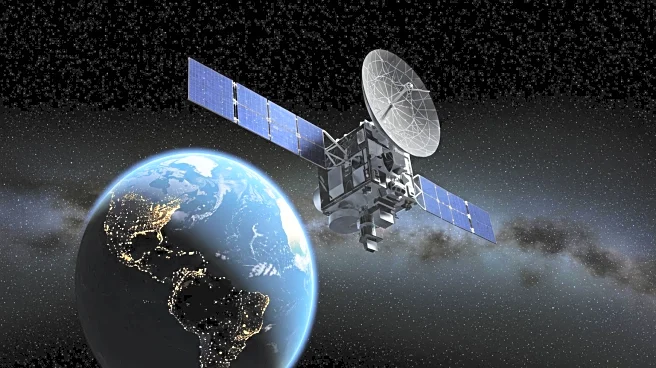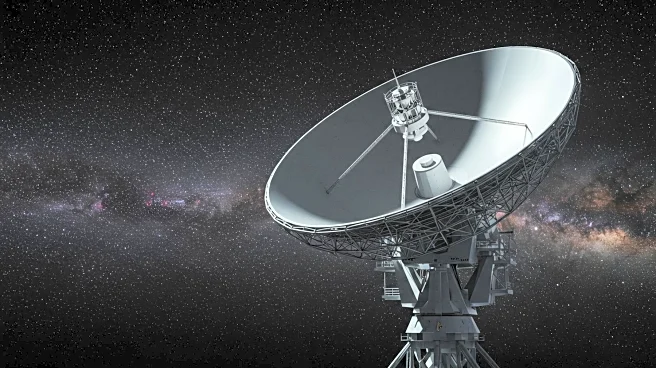What is the story about?
What's Happening?
NASA and the Indian Space Research Organisation (ISRO) have launched the NISAR satellite, a groundbreaking mission aimed at monitoring Earth's surface changes. The satellite features the largest radar antenna ever used in a NASA mission, designed to detect minute movements in the planet's crust. This collaboration between NASA and ISRO marks a significant advancement in geoscience, providing detailed 3D imaging capabilities. The satellite was launched from India's Satish Dhawan Space Centre on July 30, 2025, and has successfully deployed its massive radar antenna over a four-day period. NISAR's dual synthetic aperture radar systems allow for high-resolution imaging under various conditions, enabling scientists to create detailed three-dimensional images of Earth's surface changes.
Why It's Important?
The NISAR satellite represents a significant leap in Earth observation technology, crucial for understanding and addressing global challenges. Its advanced radar systems will provide unprecedented insights into Earth's surface changes, enhancing our understanding of geological dynamics and environmental shifts. This data is expected to improve disaster response strategies, offer new insights into climate change impacts, and potentially allow for more accurate predictions of geological events. The mission is anticipated to revolutionize environmental monitoring and disaster preparedness, providing valuable information to scientists and policymakers.
What's Next?
As NISAR begins its mission, the scientific community eagerly anticipates the wealth of data it will provide. Researchers are expected to use this data to enhance disaster response strategies and gain new insights into climate change impacts. The satellite's capabilities may also lead to more accurate predictions of geological events, offering a transformative approach to environmental monitoring. The collaboration between NASA and ISRO is likely to pave the way for future joint missions, further advancing geoscience research.
AI Generated Content
Do you find this article useful?













